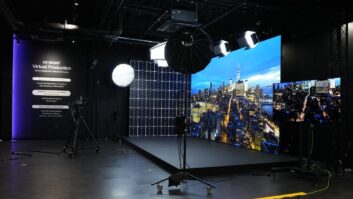According to the latest research from Futuresource Consulting, shipments of products with built-in voice assistant technology will double to 3 billion units in 2024, thanks to enhancements in the underlying technologies along with increased penetration across consumer electronics. This represents a CAGR (compound annual growth rate) of 19% across the forecast period, in spite of the effects of the pandemic. The impact of Covid-19 dampened VA shipments throughout 2020, says the report; however, the effect of lockdowns on consumer purchasing was less pronounced than anticipated, and 2020 saw a 9% increase in shipment volumes overall.
 Apple, Google and Baidu emerged as the top three VA platform vendors by unit shipments in 2020, says Futuresource. Apple’s Siri holds 25% share worldwide, reflecting strong sales in Apple iPhone, iPad and Airpods; the newly announced AirPods Max will expand Siri’s opportunity further in 2021. Google Assistant holds 22% share, primarily due to its integration in Android smartphones and tablets, but also now illustrating moderate growth in the wearables category. Baidu hold 14% market share overall, driven by its success in smart speakers and smartphones. The company made moves into hearables, launching XiaoduPods late in 2020; meantime, further collaboration with Huawei promises to widen their market opportunity in 2021.
Apple, Google and Baidu emerged as the top three VA platform vendors by unit shipments in 2020, says Futuresource. Apple’s Siri holds 25% share worldwide, reflecting strong sales in Apple iPhone, iPad and Airpods; the newly announced AirPods Max will expand Siri’s opportunity further in 2021. Google Assistant holds 22% share, primarily due to its integration in Android smartphones and tablets, but also now illustrating moderate growth in the wearables category. Baidu hold 14% market share overall, driven by its success in smart speakers and smartphones. The company made moves into hearables, launching XiaoduPods late in 2020; meantime, further collaboration with Huawei promises to widen their market opportunity in 2021.
“Voice control has established itself as an essential feature across consumer electronics,” says Simon Forrest, principal technology analyst at Futuresource Consulting. “The audio processing aspects of virtual assistants have largely matured, and focus has shifted towards improving assistant competency and optimising language models. As such, innovation now lies squarely in the hands of the technology giants with knowhow in artificial intelligence.”
Platform vendors are moving swiftly to utilise neural network accelerators (NNAs) to place many elements of voice engines at the edge, on devices themselves, to reduce latency and increase privacy. Prime examples of this include the Honghu AI chip jointly developed by Huawei and Baidu, and Amazon’s AZ1 Neural Edge processor, allowing voice algorithms to execute on the device itself, starting with an all-neural speech recognition model that handles requests locally. Moreover, vendors are creating lightweight VA solutions that can run even on small microprocessors, extending the opportunity to place voice into battery-operated devices.
“Virtual Assistants are developing beyond simple command and control mechanisms, transforming into platforms with rudimentary conversational ability and intelligent anticipation,” advises Forrest. “In 2021, we expect VA platforms will become capable of participating in conversations and deliver new monetisation opportunities for service providers beyond harvesting data on usage behaviours.”
The trend of integrating voice into devices continues. Futuresource predicts that four out of every five consumer electronics products sold will exhibit some form of virtual assistant capability by 2024.







